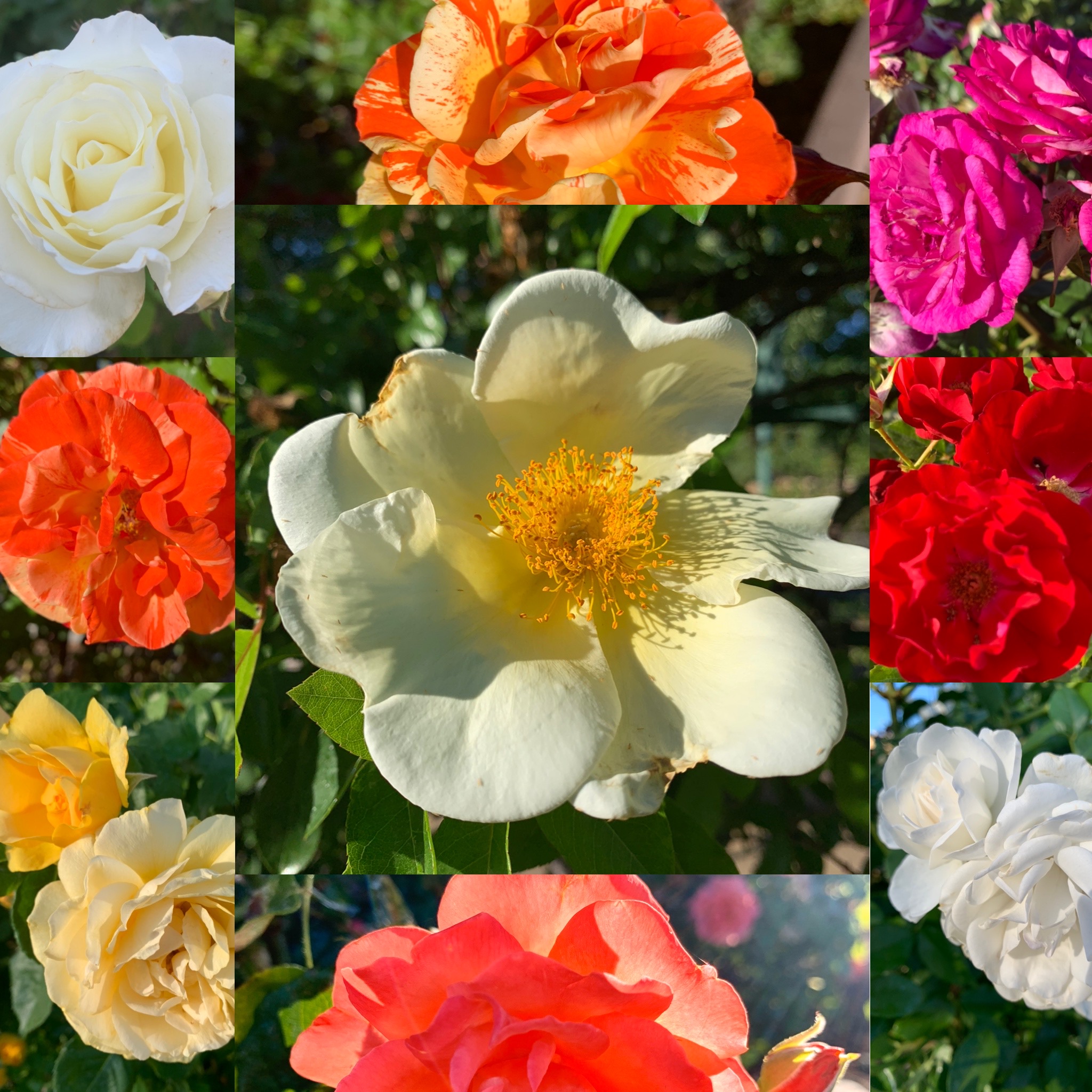Now That the Roses Have Finished Blooming

Southwest Yard & Garden by Dr. Marisa Thompson
It seems to me that rose gardening fell out of style (not among rosarians, to be sure, but among newbie gardeners) when xeriscaping became the new rage a few decades back. Now that many people and whole neighborhoods have embraced the lovely “lush and lean” aesthetic that can easily be achieved using native and drought-adapted plants, I think roses will fit right back in, surprise even the most water-conscious gardeners, and start trending again.
Perhaps they already have. The City of Albuquerque BioPark Botanical Garden has an incredible High Desert Rose Garden with carefully selected hardier species and species hybrids from arid climates. For details on several clever water-saving, rose-loving techniques they’re demonstrating, visit the blog version of this column at https://nmsudesertblooms.blogspot.com/2020/05/nomdebloom.html. Spoiler alert: mulch is one of the tricks, but it’s a living mulch!
While visiting the Albuquerque Rose Garden (showcasing over 1,200 roses maintained by the dedicated Albuquerque Rose Society volunteers, http://www.albuquerquerose.com/) again last week, I noticed that many of their rose bushes, including the ones that were pruned during my last visit in early March, had already bloomed. Several flowers and leaves showed signs of damage from our April 13 frost, and a few later bloomers were still developing buds. I got great photos of the beauties that were in bloom. To see more of these pretty pics, as well as photos of frost damage and disease and videos from the pruning demo in March, check out the blog (link above). This week I selected a column written by retired NMSU Extension Horticulture Specialist Dr. Curtis Smith 13 years ago to feature as a timely reprint.

Painted lady butterfly (Vanessa cardui) on hot pink ‘Peggy Martin’ hybrid multiflora rose bush at the Albuquerque Rose Garden. Photo credit M. Thompson.
Question: Last week my roses were full of blossoms, but now there are only a few that look good. The rest are faded and the petals are falling. What can I do to make them bloom again?
Answer: It depends on what roses you are growing. There are some roses that will not bloom again this summer, including a common rose called Dr. Huey. This is the rootstock on which many roses are grafted today. In some instances, this rootstock plant begins growing and overwhelms the rose that was grafted on it, or the grafted rose is damaged by winter freezing. When this happens your rose blooms once each year. Dr. Huey’s flowers are numerous and very attractive dark red with yellow centers. Many people just keep it for that reason rather than replacing it after it assumes dominance. There are some old-fashioned roses that also bloom only once. Unless you have Dr. Huey or an old-fashioned rose, you can expect more flowers this summer.

‘Dr. Huey’ hybrid rose just barely past peak bloom at the Albuquerque Rose Garden on May 13, 2020. ‘Dr. Huey’ happens to be the rootstock to which most roses grown in the U.S. are grafted. Photo credit M. Thompson
Most modern roses will bloom again as long as they have sufficient water. Don’t over water, but don’t let the plants wilt for lack of water either. A good way to conserve water and keep your roses healthy is to maintain a good layer of mulch around their roots. This will conserve water, keep their roots from getting too hot in the sunlight, and help minimize competition from weeds.
To maximize the production of more blossoms, you can fertilize now with a rose fertilizer. Pruning will help maintain the quality of future blossoms. Pruning to remove the spent flowers is called deadheading and removal of these spent flowers prevents formation of rose hips (fruits). The plant’s food, produced by photosynthesis, is then directed in production of more flowers.
When you prune, you should cut the plant in a manner that directs growth in the proper direction. Prune back to a bud facing the direction you want new growth. Don’t direct growth in the direction of a sidewalk or toward the middle of the plant where there is not enough light for good flower production. Prune far enough back so that the stem is strong enough to support a new flowering stem. A traditional rule of thumb is to prune back at least as far as the first 5-leaflet leaf. The first leaf below the spent flower usually has only one leaflet or perhaps 3 leaflets. Buds from these nodes are often weak and do not properly support the new flowers well. You can cut well below the first 5-leaflet leaf if you need to reduce the size of an overly long branch that is growing over a sidewalk.
When the next series of flowers is produced, you can cut some long-stemmed roses to take indoors. This is an appropriate means of pruning and prevents the need for deadheading that particular blossom.
Roses are a favorite garden plant in New Mexico and elsewhere in the country because of their tendency to rebloom and produce a succession of flowers throughout the summer. Enjoy your roses.
For more gardening information, including decades of archived Southwest Yard & Garden columns, visit the NMSU Extension Horticulture page (http://desertblooms.nmsu.edu/), follow us on social media (@NMDesertBlooms), or contact your County Extension office (https://aces.nmsu.edu/county).
Marisa Thompson, PhD, is the Extension Horticulture Specialist for New Mexico State University and is based at the Agricultural Science Center at Los Lunas.
